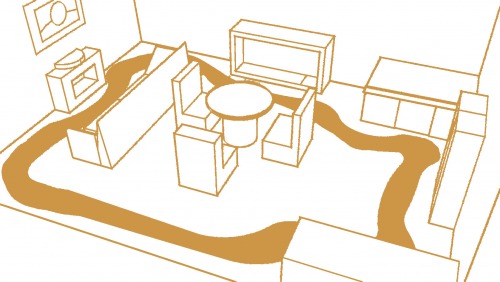This is updated, reason is here
A video in better quality than YouTube & Google is here
How to make Robot Wall Racers yourself, see here
The car-chase was made by holding a camera on a stick, chasing the cars around. Some clips where made by placing the camera on a record-player. All editing was done in the standard "free" program that comes with a Mac, called iMovie. It is a nice program for light editing.. but phew, it was pushed to make this
The second video shows some work with the skid-turning. It also shows improved handling in general.
Notice how it sometimes mis-judges when the wall is not 90 degrees, but has bumps. But also how it handles getting out again :D (Me proud, love this, think it is cool, it drives so much better than what I can do with remote myself)
Of course I could just give it some more space to turn in the code, to drive more "safe", but I kind of like it to be tight :) And notice hw it never bumps into anything else - the polystyrene-blocks would fly right off if it hit them.
I have added an extra battery for more power.
>>>>>>>>>>>>>>>>>>>>>>>>>>>>>>
Your home is a racing track, you just do not know it.
Look at your floor where it meets a wall.
Between 30 and 70 cm from that goes an imaginary path, following along the wall.
That is the racing track!
Where the wall meets another wall, or there is an obstacle, the track follows in a smooth path, always 30-70 cm away, on the floor.
The track returns to where you started, you see! :)
It is a full racing track:
You can time how long time it takes for a little robo-car to take one round. You can then try to improve the code, and time it again.
If you make the car like this:
One sensor (Could also be infra-red or whatever) looks ahead, another looks to the right. Then code could be something like this:
main:
If something in front, turn left, go to main.
If something closer than 30 cm to the right, turn left, go to main.
if nothing in front and something closer than 70 cm to the right, drive ahead, go to main.
If nothing to the right closer than 70 cm, turn right, go to main.
A car is racing your home!
It can be timed how long before passing by the same line again and again.
But a single car is just test-labs, no?
Now take 2 cars with the excact same setup as above, let's say a red car & a blue car. Now it get's interesting!
If red car is behind blue car, what does it do?
Well.. Something (blue car) is in front, so we turn left to take over.. until nothing is on the right, so we pull back.. That is trying to take over!
At a point the blue car is turning left because there is something in front.
Then the red car will have the inner track..
What is actually going on, is that one car is behind, but is "strugeling" to take over.. when it is in front, the other will fight to get ahead.. and we have a full race :D
You can take Red & Blue and place them next to each other, next to the wall; They will both drive full speed ahead, until a turn, where the inner car will have advantage. But then..
Wall Racers are born, ladies and gentlemen.. I had these 2 cheap RC cars with crap maneuvering abilities, and thought of what I could do with them. Crap - but still; They sort of drive like cars - not like differential steered robots.
It has ben quite simple, have experimented with AZ8222's instead of motor drivers. And just a Picaxe on a standard board, simple and fast.
Of course, when turning angle is not enough to avoid obstacles, maneuvers with reverse and 3-point turns must be done. But this is why we have a microcontroller, and it is not spoiling the fun - on the contrary :)


Finds the hidden racing track in every room.. and races it!
- Actuators / output devices: 2 motors each
- Control method: autonomous
- CPU: Picaxe 28X
- Operating system: Picaxe
- Power source: 4 CC cells
- Programming language: Picaxe basic
- Sensors / input devices: SRF05
- Target environment: any room
This is a companion discussion topic for the original entry at https://community.robotshop.com/robots/show/robot-wall-racers





